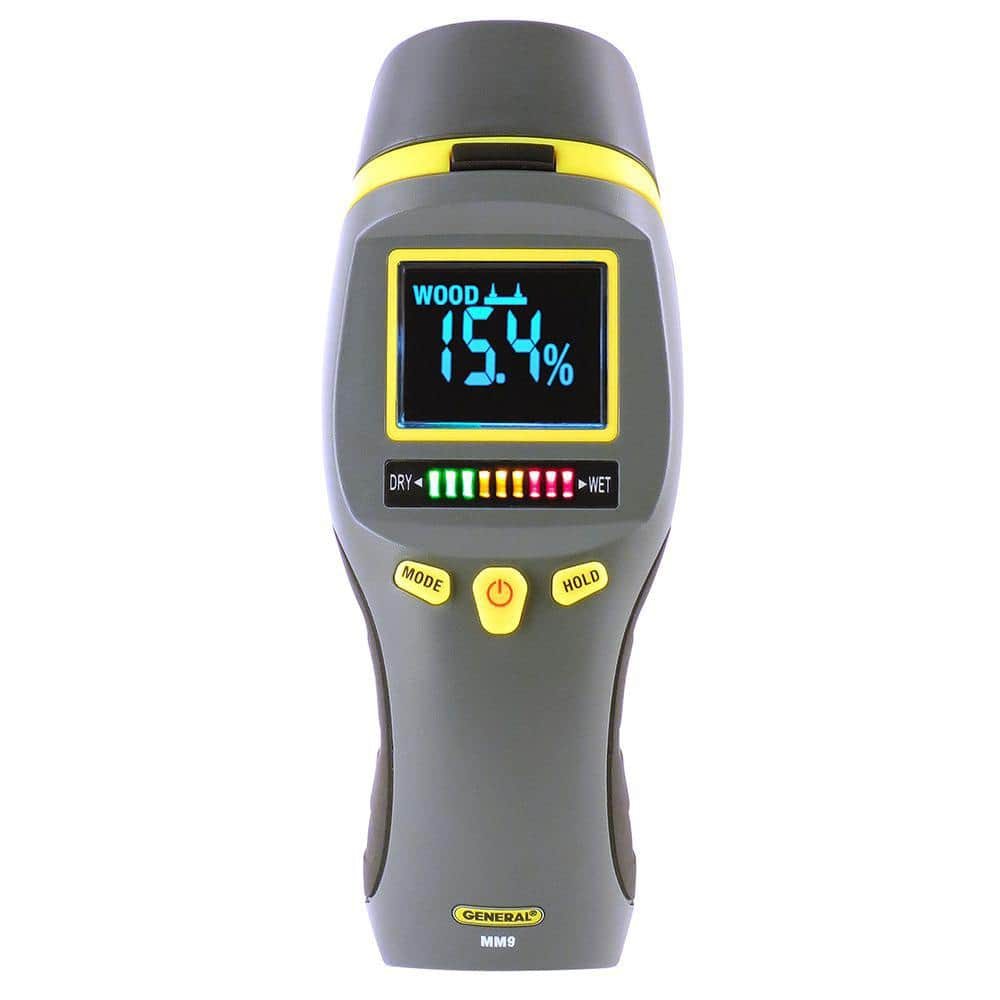Moisture Meter Buying Guide: What to Search for in High-Quality Instruments
Moisture Meter Buying Guide: What to Search for in High-Quality Instruments
Blog Article
Comprehending the Relevance of a Moisture Meter in Avoiding Mold And Mildew and Water Damage in Your Home
In the realm of home maintenance, the existence of dampness can usually be a silent yet powerful adversary, capable of creating prevalent mold development and insidious water damage if left uncontrolled. Recognizing the significance of a dampness meter in this battle is not just an alternative but a calculated need.

Relevance of Dampness Discovery
Reliable dampness discovery techniques are essential for guarding residential properties and avoiding potential mold growth and water damages. Wetness can seep right into various building products, leading to architectural concerns and carcinogen - Moisture Meter. By using a wetness meter, homeowner can proactively identify areas vulnerable to excess wetness, permitting prompt treatment and mitigation strategies
Dampness meters give precise analyses of moisture degrees in various materials such as wood, drywall, and concrete. This data aids in determining locations of concern, also in surprise or hard-to-reach locations. Early detection of moisture buildup makes it possible for timely fixings or modifications to protect against further damage.

Just How Wetness Meters Job
Wetness meters play an essential duty in the proactive recognition of excess dampness, aiding in the avoidance of possible mold and mildew development and water damage by supplying accurate analyses of dampness levels in numerous structure products. These tools work based upon different concepts, depending upon their type. Pin-type moisture meters, as an example, have two pins that pass through the product to gauge the electrical resistance between them. When dampness exists, it boosts the material's conductivity, causing a reduced resistance reading. Pinless moisture meters, on the various other hand, usage electromagnetic sensing units to scan the material without causing damages. These sensors release electromagnetic signals that penetrate the material and determine the dielectric residential properties, suggesting wetness web content. Some progressed dampness meters pin both combine and pinless innovations for comprehensive dampness detection. Understanding just how moisture meters function is vital for accurate and timely dampness degree assessments, allowing efficient preventive actions against mold and mildew and water damage.
Detecting Early Indication
Upon initial evaluation of a home, identifying refined signs of excess wetness ends up being essential in the very early detection of possible mold development and water damages. Water stains can signal leakages or infiltration, while peeling off paint or wallpaper may be a result of wetness jeopardizing the bond of these products to the surface. Furthermore, an increase in allergy signs or breathing issues among occupants may recommend the presence of mold due to excess moisture.


Avoiding Mold And Mildew Development
Acknowledging very early indication of excess wetness within a property not just allows timely discovery of possible mold growth and water damage yet likewise offers as a proactive procedure in protecting against great site the proliferation of mold. To properly protect against mold and mildew development, it is important to deal with any type of sources of dampness immediately. This can include dealing with leakages in home windows, roofings, or pipes, guaranteeing appropriate air flow in moist locations like kitchens and restrooms, and making use of dehumidifiers in high-humidity rooms. Regularly examining and preserving the residential property's plumbing, roof, and gutters can also aid in protecting against water breach that might cause mold and mildew development.
Checking dampness levels in areas vulnerable to wetness, such as cellars and crawl spaces, making use of a dampness meter can likewise help in very early discovery of raised dampness degrees and prospective mold growth. By taking proactive measures to protect against excess moisture and mold and mildew growth, property owners can secure their residential or commercial property and indoor air quality.
Benefits of Routine Surveillance
Regular surveillance of dampness levels in a home can play a crucial function in preserving a healthy and balanced indoor setting and preventing potential mold and mildew and water damage. By frequently inspecting wetness levels, home owners can discover any type of issues quickly and take needed actions to stop mold and mildew growth and water damage.
In addition, routine tracking allows homeowners to track patterns and patterns in moisture degrees additional hints in time. By establishing a standard and surveillance modifications, individuals can identify any type of locations of problem or potential susceptabilities in the building's framework. This data-driven method makes it possible for targeted interventions and upkeep efforts to Continue address underlying issues before they rise into more substantial issues. Inevitably, the consistent monitoring of wetness degrees equips house owners to shield their building, guard their health, and protect the honesty of their indoor setting.
Final Thought
In conclusion, using a wetness meter is crucial in stopping mold and mildew and water damage in homes. By identifying very early indication of wetness, house owners can take proactive procedures to stop mold development and expensive repair services. Routine tracking with a moisture meter can aid preserve a healthy interior setting and safeguard the architectural honesty of the home. It is a valuable device for making sure the safety and wellness of homeowners.
By making use of a wetness meter, residential or commercial property proprietors can proactively identify areas susceptible to excess moisture, allowing for prompt intervention and mitigation techniques.
Moisture meters give accurate analyses of wetness degrees in various materials such as timber, drywall, and concrete.Wetness meters play a pivotal role in the positive recognition of excess moisture, helping in the avoidance of prospective mold growth and water damage by offering exact analyses of wetness levels in different building products. Understanding how moisture meters feature is important for precise and timely moisture level analyses, allowing efficient preventive measures against mold and mildew and water damages.
Keeping an eye on moisture levels in locations susceptible to dampness, such as basements and crawl areas, making use of a dampness meter can also assist in very early discovery of elevated wetness degrees and possible mold development.
Report this page